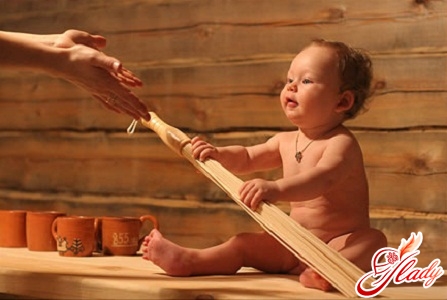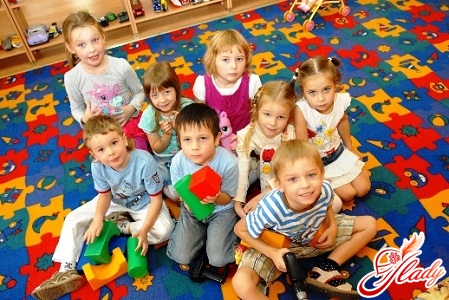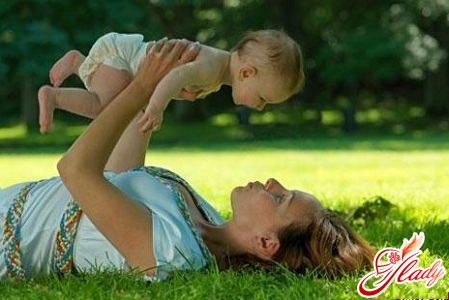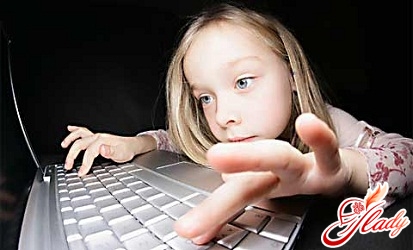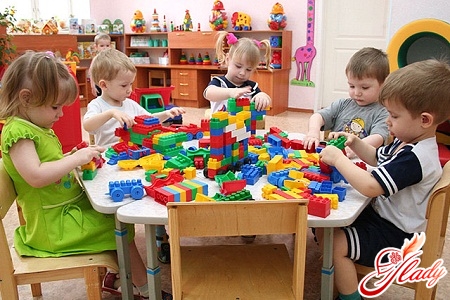 “How is my son or daughter?Is the child being bullied in kindergarten? What if the child cries in kindergarten, calling for mom? Such thoughts, despite being incredibly busy, come to the minds of all parents without exception, at least periodically during the working day. And these fears are completely normal and natural - after all, everyone wants only the best for their child. And by entrusting their little one to the care of even the best educators, parents are deprived of the most important thing for them - the opportunity to control the child's life, even if only while the baby is in kindergarten. Most often, these worries arise precisely from not knowing what the child is doing while he is in kindergarten. Of course, it goes without saying that any parent knows the general outline of the daily routine in kindergarten. However, not everyone knows what happens to their child at each stage. This is what will be discussed in today's article.
“How is my son or daughter?Is the child being bullied in kindergarten? What if the child cries in kindergarten, calling for mom? Such thoughts, despite being incredibly busy, come to the minds of all parents without exception, at least periodically during the working day. And these fears are completely normal and natural - after all, everyone wants only the best for their child. And by entrusting their little one to the care of even the best educators, parents are deprived of the most important thing for them - the opportunity to control the child's life, even if only while the baby is in kindergarten. Most often, these worries arise precisely from not knowing what the child is doing while he is in kindergarten. Of course, it goes without saying that any parent knows the general outline of the daily routine in kindergarten. However, not everyone knows what happens to their child at each stage. This is what will be discussed in today's article.
"Early in the morning, at dawn"
We hear the unobtrusive sound of the alarm clock and reluctantlywe open our eyes. And the teachers are already on their way to work. No late buses, broken cars, storms, tornadoes, ice and other unimaginable natural disasters can be the reason for the teacher to be late for work. The doors of the group must swing open to meet their kids at exactly 7:00. The main flow of kids starts at 7:30 and continues until about 8 o'clock in the morning. As a rule, not every morning the kids get up cheerful and in a good mood. Some of them did not get enough sleep and therefore are capricious, some do not want to part with their mother. Therefore, often in the morning in the groups of kindergartens, especially the younger ones, there is a deafening roar in the morning, since often the child goes to kindergarten reluctantly. And the task of the teacher is not so simple - to calm down the roaring five or two kids. As a rule, it does not take that much time. Having lost their most important audience – mom or dad – children stop crying very quickly. And by the time dad comes out of the kindergarten and with trembling hands takes out a lighter, or mom discreetly wipes away a tear, the little one has already forgotten that he was crying just recently.
"One, two, three on charge become!"
Also, every morning the teacher spends time withexercises for babies. Exercise is an urgent need for a child's body. For older children, exercises are necessary to maintain vitality, and for the youngest babies, exercises are an excellent way to learn to coordinate their movements. However, as you yourself understand, exercises for schoolchildren and exercises for babies are two completely different things. Children will not understand such a banal phrase as "put your feet shoulder-width apart", and therefore will simply ignore it. Morning exercises for babies are more reminiscent of a real theatrical performance, where the role of the director is assigned to the teacher. You can explain to a child what exactly he is required to do at a particular moment only with the help of an associative series - bunnies jump, ducks walk, turtles crawl. As a rule, morning exercises are performed with musical accompaniment, which children really like and turn exercises into an exciting activity. By the way, very often a child’s adaptation to kindergarten goes more smoothly precisely thanks to morning exercises.
Breakfast in the kindergarten
During breakfast, confusion and confusion are also not uncommon.conflicts. Very often children have breakfast at home and come to kindergarten already full. Of course, in such a case the child will not want to have breakfast, and the teacher will insist that the baby eat anyway. In order to avoid such misunderstandings, if your child prefers to have breakfast at home, it is necessary to discuss this issue with the teachers in advance. The opposite situation is just as common - the child, for some reason, is late for breakfast and remains hungry. Of course, this does not happen in all kindergartens, but only in those in which a certain number of portions are given out in the kitchen, in accordance with the number of children. But in any case, knowing that you and your baby are late for breakfast in kindergarten, call the teacher in advance and warn him about this so that your child can have breakfast and he does not remain hungry until lunch. All parents without exception should have the phone numbers of the teachers. The nutrition of children in kindergarten also requires increased attention and a responsible approach. Until recently, all concerns related to the feeding process fell entirely on the shoulders of the teacher's assistants or, simply put, nannies. However, recently the issue of children's nutrition is handled not only by the teacher's assistant, but also by the teacher. The nanny brings food to the group, and the teacher distributes it among the children. Together, they watch how the children eat, and help the children if necessary. After breakfast, the teacher takes care of the children, and the teacher's assistant cleans up after breakfast.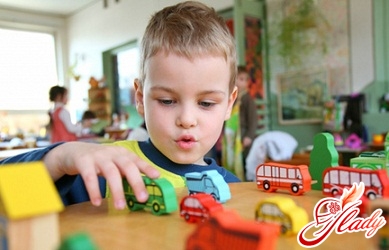
"Learning is light"
As you know, the tasks of a kindergarten includenot only looking after children and feeding them, but also classes with children, the purpose of which is the comprehensive development of both physical and mental abilities of children. Of course, most of the classes with children are conducted by specialists - defectologists, psychologists and speech therapists. However, the teacher also puts a lot of work and soul into the development of our children, despite the fact that we, parents, are accustomed to. That the duties of the teacher include only the mechanical process of caring for the child: dressing, taking for a walk, undressing, feeding, putting to bed. What exactly our children will do in class depends on their age and skills. Most of the classes are intentionally linked by teachers in one way or another with certain natural phenomena. Many parents are surprised by this fact and sometimes even openly indignant, saying why all the conversations and classes in kindergarten are reduced to banal natural history. However, we should not forget that kindergarten-age children are still very young and, due to their age, cannot perceive complex information that is not supported by any examples. And the world around us is the best way to understand this or that phenomenon. After all, examples are as clear as possible. In developmental classes, children are engaged in drawing, modeling, applique. And these classes are held for a reason. For example, drawing not only develops creativity in a child, but also teaches him to distinguish and remember the names of colors, in the process of drawing, the child learns to hold pencils and brushes correctly. Modeling from plasticine also has an extremely positive effect on the development of the child, especially fine motor skills. And, as you know, it is precisely fine motor skills that determine how well a child pronounces certain sounds, how well his speech is developed in general. Or, for example, applique. It would seem to be ordinary paper, but what scope for a child's imagination it leaves! For example, three ordinary circles of different sizes, from which it is necessary to fold and glue a snowman onto cardboard. The child should have a sample in front of his eyes, and the task itself is best given in winter. As a result, the simplest applique acquires almost global meaning, especially for younger children. After all, it turns out that you can make balls from snow, and from balls, in turn, real snowmen, the same as those children saw in cartoons. Thus, the child develops both figurative and logical thinking.
One, two, three, four, five - go bunnies to walk
As a rule, after completing developmentalclasses, if weather conditions permit, teachers dress the children and take them out for a walk. The duration of the walk depends on how long the children's developmental classes last. Most often, younger groups go for a walk at 10 am, and older groups at 10.30. In most kindergartens, walks end at about 12 pm. Despite the fact that there are established sanitary standards regarding children's walks in kindergarten, all decisions about the advisability of children's stay in the fresh air are made by teachers on the spot. So, for example, if the air temperature outside is above the minimum possible +10 degrees, but it is raining, and the wind is tearing umbrellas out of hands, no one will take the kids for a walk. After all, the main goal of walks is to improve the health of the child's body, and walks in bad weather cannot bring any benefit. Hardening children in kindergarten does not consist of walks in the rain. But in the summer, on the contrary, even some classes are prepared to be held outdoors, so that children can spend an extra hour outside. After all, you can draw on the asphalt, right?
Dressing for a walk
Since we are already talking about walks, you can’t help butрассказать о таком важном и непростом деле, как процесс одевания ребенка перед прогулкой. Летом данной проблемы, в принципе, не существует – достаточно просто переобуть малышей. А вот в зимнее время этот процесс превращается в целое искусство. Особенно в том случае, если на прогулку собираются детишки младшего возраста. Так, например, если в старших группах дети одеваются практически полностью самостоятельно, а воспитатели лишь изредка помогают справиться с непослушными пуговками или молниями. А вот в младших группах воспитателям приходится одевать малышей, что говорится «от и до». Как правило, в начале этапа переодевания все малыши снимают шорты, штанишки, платья или сарафаны, в которых крохи ходят в группе. После этого малыши при помощи няни и воспитательницы одевают теплые кофточки, свитера и штанишки, без которых нельзя обойтись в холодное время года. После этого крох облачают в дополнительные теплые носочки и сапожки, а также курточки и комбинезончики. После этого на крох надеваются шапочки, и рукавички и, наконец, последний торжественный момент – ребенку на шею повязывается шарф и воспитатель убеждается, что поясница крохи, его ушки и шея надежно спрятаны от мороза. Разумеется, для того, чтобы как можно быстрее одеть всех деток и не допускать их вспотевания, в процессе активно задействована не только воспитательница, но и няня. А уж сама воспитательница, как правило, одевается на бегу по коридорам. На прогулке рядом с детьми находится только один взрослый человек – воспитатель. А помощник воспитателя в это время приводит в порядок помещение, где находятся малыши – проводит влажную уборку, проветривает помещение, убирает по местам игрушки, чтобы к приходу малышей все было в полном порядке. Подобные меры позволяют создать благоприятные для здоровья детей санитарные условия. После прогулки воспитательница вместе со своей помощницей помогают детям раздеться. Пока детки под присмотром воспитательницы моют руки и рассаживаются по своим местам за столы, помощник воспитателя приносит еду в группу. Примерно с 12.00 до 13.00 в садике обеденное время. Прием пищи в обед длится гораздо более продолжительное время, чем во время завтрака. В меню входит и первое блюдо, и второе, и третье. Во время обеда также бывает всякое – одни детишки обожают суп, другие, напротив, терпеть его не могут, кто-то обожает котлеты, а кто-то – пюре. Одни детки самостоятельно кушают все, что им предложено, а другие отказываются брать в руки ложку и их приходится кормить воспитательнице и нянечке. Некоторые крохи напрочь отвергают определенные виды продуктов, например, салаты из свеклы или капусты. Как правило, воспитательница не заставляет кроху есть те продукты, которые он категорически отвергает, ведь это нарушает права ребенка в детском саду. Однако со стороны родителей гораздо разумнее заранее предупредить воспитателя о тех продуктах, которые ребенок категорически не приемлет либо же они ему противопоказаны по состоянию здоровья. Однако существует огромное количество одаренных воспитателей, которые даже ненавистный салат превращают в самое любимое блюдо. Ведь, как известно, самое лучшее средство уговорить ребенка сделать что-либо – это игра. Именно в игровой форме лучше всего кормить маленького нехочуху. 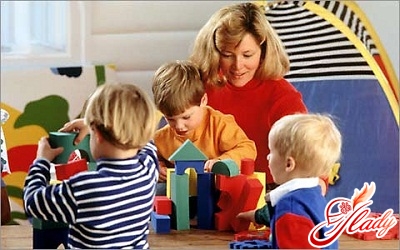
"Who was sleeping on my bed?"
After lunch it's time for a nap,since the child's body needs a good rest. So, lunch is over, hands are washed and it's time to go to bed. In the older groups, children undress themselves and put their clothes on a chair. But in the younger groups, this issue is a little more complicated - children do not yet know how to undress themselves, and even more so, fold their clothes. In order to teach the child self-care skills, everyone has to try - the teacher, the nanny, and the baby himself. After everyone lies down, the teacher covers the children with blankets and begins to lull the baby to sleep. Some teachers read or tell a fairy tale, others sing a lullaby. As a rule, very soon the tired children fall asleep soundly and soundly. However, of course, there are also those babies who do not want to sleep during nap time, especially in the older groups. Such children are extremely reluctant to go to bed, toss and turn for a long time, get distracted by conversations with teachers, thereby preventing other children from sleeping. As a rule, such children eventually fall asleep, but a little later than all the other children. As a result, by the time it is necessary to wake up, the baby does not have time to get enough sleep and ends up being capricious. In such cases, the parents themselves are often to blame, who do not adhere to the child's usual daily routine on weekends. As a result, the weekend is over, the child goes to kindergarten, and his schedule is constantly disrupted, and he has difficulty falling asleep in kindergarten.
Sleep tired kids
While the kids are sleeping quietly and peacefully, the teachera rather "hot" time is coming - work with papers and documents. After all, it is necessary to inform the head of the kindergarten about what exactly the teacher does with the kids, and it is necessary in writing. Each exercise, each lesson must be described in all details - after all, the teacher's work can be checked at any time by the methodologist. And such an issue as the health of children in the kindergarten is under strict control of doctors, who also want to receive a report.
After waking up
Children's sleep lasts until three o'clock in the afternoon.By this time, some children wake up on their own, while the teacher has to wake up other little ones. The children need help getting dressed, and the girls also need to have their hair combed so that they look neat. After the children are tidied up, they have an afternoon snack. As a rule, the kids are offered some tasty and healthy product for an afternoon snack. For example, an apple, an orange, or cookies with milk. After the children eat, they start to break the order in the toys that was put in place during nap time with renewed vigor. As a rule, at the beginning of each school year, parents are told about the clubs that will be operating in the kindergarten. And after the afternoon snack, the children study in the sections that their parents have chosen for them. Those children who do not do anything else continue to play in groups, under the strict supervision of the teachers, because the safety of children in the kindergarten is a priority. After 5:00 p.m. it's time for dinner, after which, weather permitting, all the kids go for a walk. It's at this time, from about 5:30 p.m. to 6:30 p.m., that parents start taking their little ones home. Another weekday at the kindergarten is over. And don't forget to talk to your little one - after all, kindergarten can look completely different through the eyes of a child. We recommend reading:





